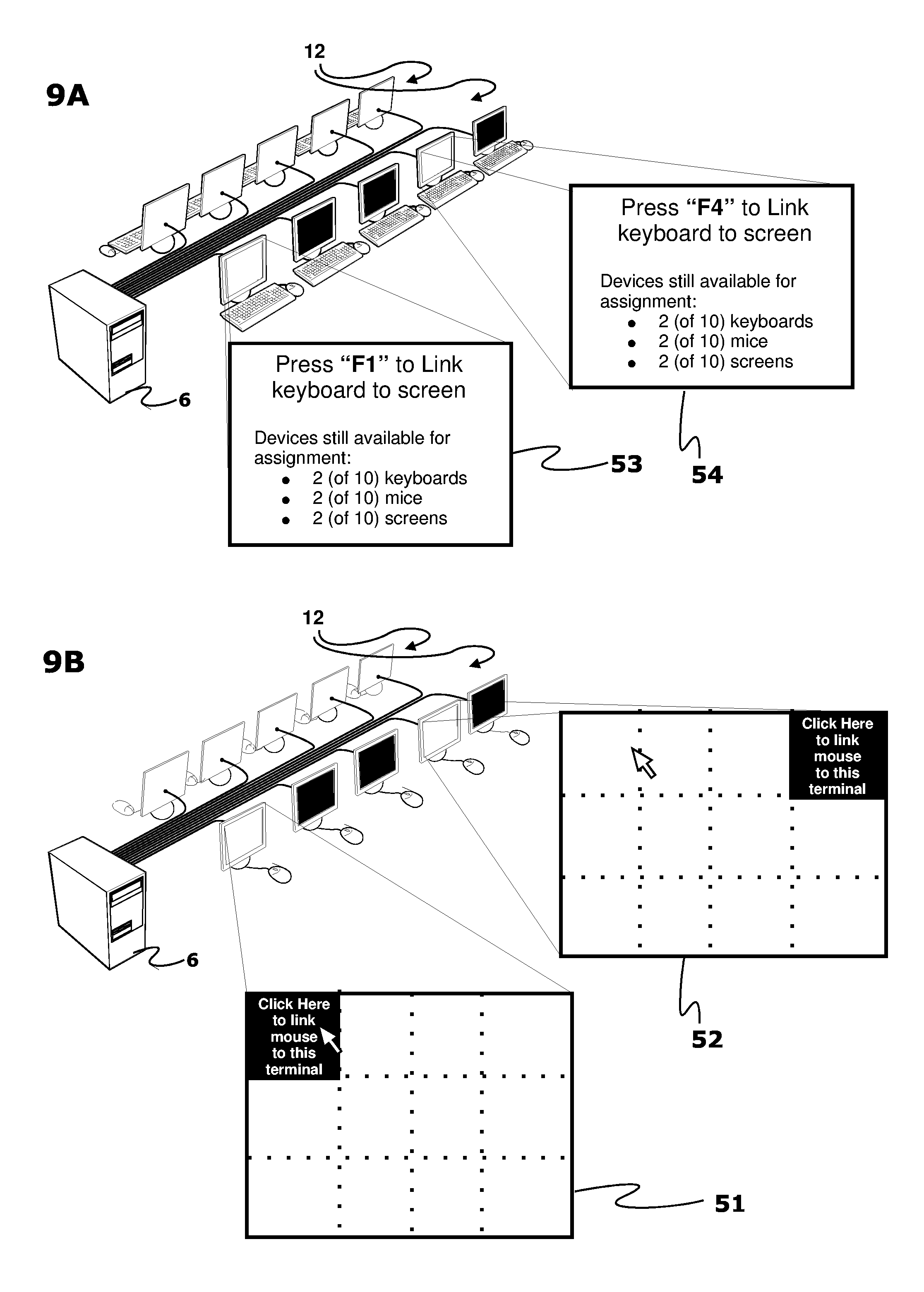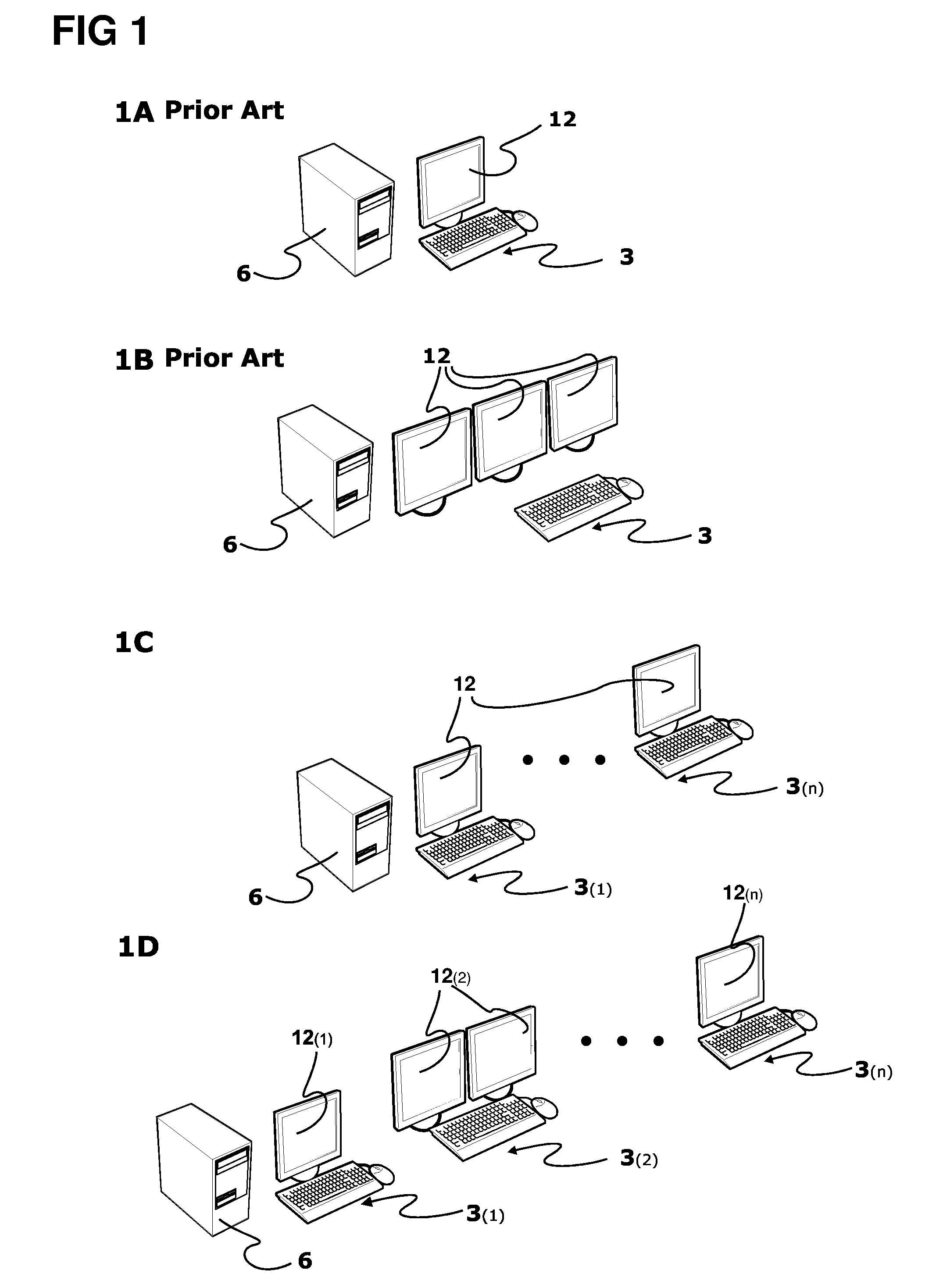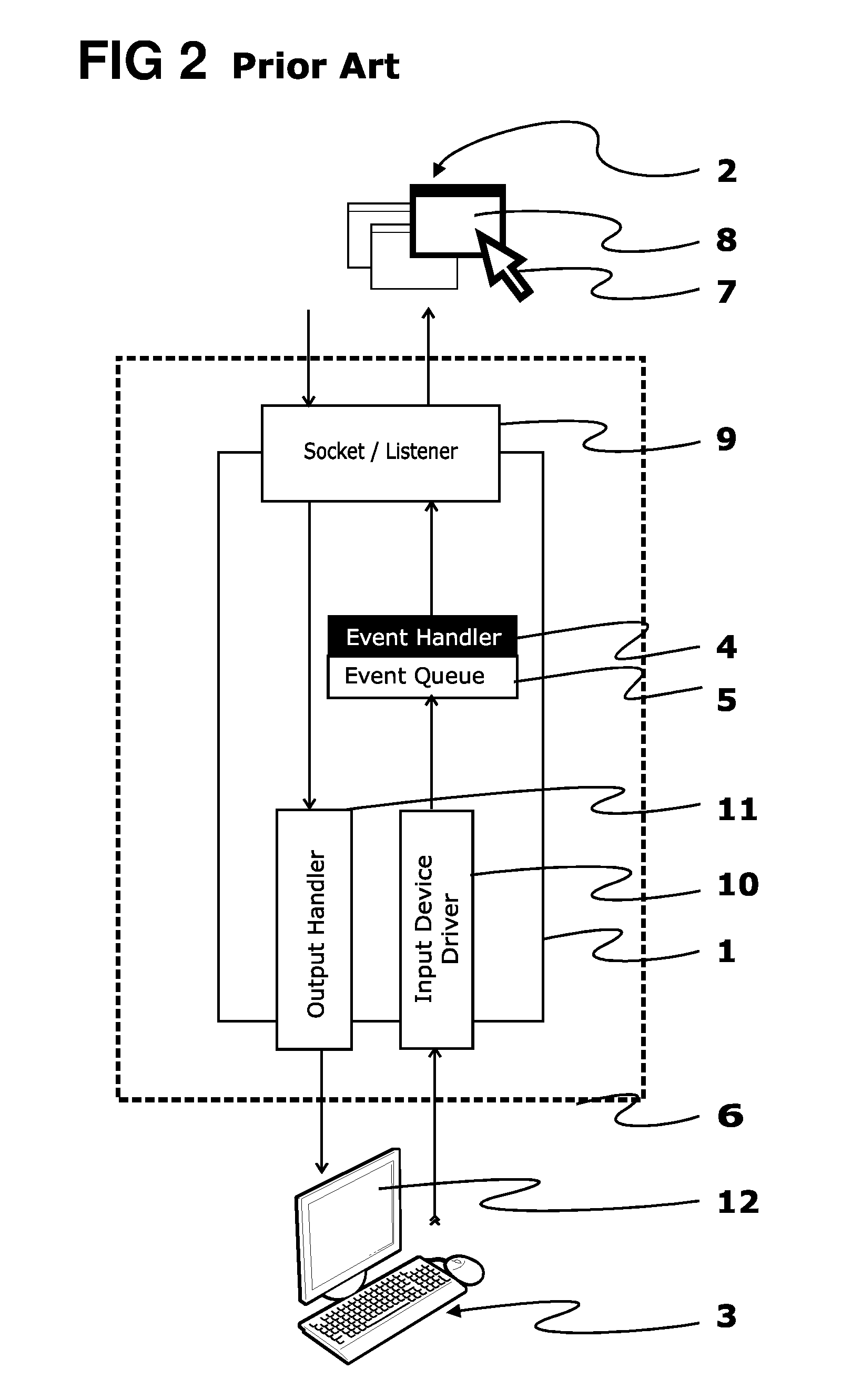Method of operating multiple input and output devices through a single computer
a technology of input and output devices and computer system, applied in the field of computer systems, can solve the problems of high cost of providing separate computer systems to each user, low utilization rate idle processing capacity of each individual computer, etc., and achieve the effect of convenient and inexpensive operation of terminals, simplified terminal configuration, and convenient diagnosis of terminal problems
- Summary
- Abstract
- Description
- Claims
- Application Information
AI Technical Summary
Benefits of technology
Problems solved by technology
Method used
Image
Examples
Embodiment Construction
[0120]In the following description, a number of terms are employed to provide a clear description of the invention. For the purposes of the description and the invention, some of the terms are defined as follows:
[0121]
Definition List 1TermDefinitionAdministrativeA graphical program accessible to administratorsAssignmentof the system used to map specific elements ofToolthe system (such as IP addresses, floppy drives,etc.) to specific terminals from a singlegraphical interface.AssignmentThe Graphical input directives, prompts orScreeninstructions presented on the Monitor to theuser to facilitate assignment of devices.ComputerRefers to the computer box typically containingCentral Processing Units (CPU), computer memory,USB connectors, and Video output ports.DaemonA computer program that is not invoked explicitly,but lies dormant waiting for some conditions tooccur.Desktopthe graphical area used to interact with clientEnvironmentapplications on the computer. Typically thedesktop environ...
PUM
 Login to View More
Login to View More Abstract
Description
Claims
Application Information
 Login to View More
Login to View More - R&D
- Intellectual Property
- Life Sciences
- Materials
- Tech Scout
- Unparalleled Data Quality
- Higher Quality Content
- 60% Fewer Hallucinations
Browse by: Latest US Patents, China's latest patents, Technical Efficacy Thesaurus, Application Domain, Technology Topic, Popular Technical Reports.
© 2025 PatSnap. All rights reserved.Legal|Privacy policy|Modern Slavery Act Transparency Statement|Sitemap|About US| Contact US: help@patsnap.com



